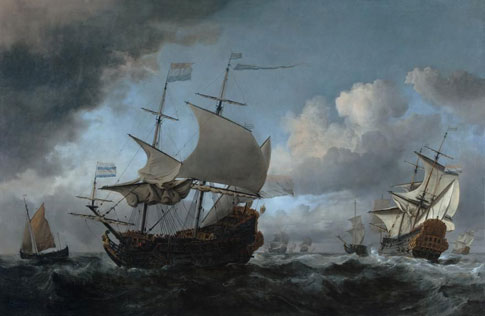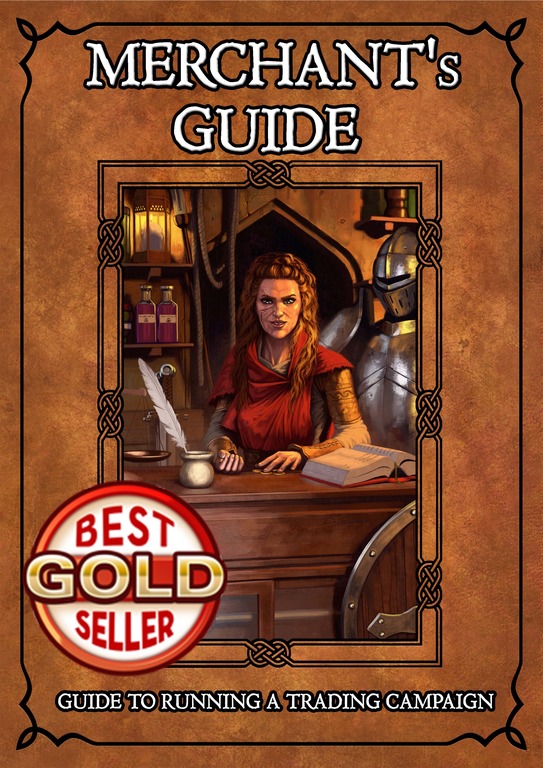UNDERSTANDING TRADE

How many of you as ever asked your Game Master to buy and trade stuff, from one city to another, for a profit?
Honestly I don’t know the numbers, but I bet that someone out there did.
We have published the awesome Merchant Guide, a pdf available on DrivethruRpg. Just have a look at the preview to have an idea of the content.
Also, if you already have an idea on how to run your own trading campaign you may want to have a look at our Trade Goods Generator.
Usually, a Game Master, caught by surprise, has to answer with a straight and polite answer.
That answer is no.
It doesn’t matter why the answer is no, and I can’t blame him/her after all.
Setting up the basic rules to allow a player to become a trade tycoon is a daunting task, and is not something you can improvise.
It’s something you have to carefully build.
So, if you decide the players can run a trading company, and thus you are planning to play a trading campaign, the you have to do a good job at implementing something that can work.
Otherwise “no” is the best answer you should provide to your players.
This article, the first of a series, will explain how to set up a trading company and have your players turn into indentured merchant.
Your players will explore the Seven Seas (I don’t know how many seas your campaign setting has).
They will ride across the lands, rarely seeing the same place twice.
They will open new trade routes and meet exotic cultures.
They will discover uncharted lands and see the hidden wonders of the world.
As Marco Polo and Amerigo Vespucci, they will go where no one has ever gone before…
…for a profit, of course!
As usual, we must ask ourselves the most basic questions, even if they may seem trivials.
What is Trading?
Trading is a kind of business, but not all businesses are about trading.
Trading is buying cheap goods from a place, and then sell them at another, for profit.
So, we have three keywords to work on.
They are Buy, Sell and Profit.
The difference between Sell and Buy, makes the Profit.
Pretty obvious you may state, and I agree with you.
What is less obvious is how much this difference should be!
Now, one of my first article on this blog were about Game Master’s traits.
One of the traits is Knowledge. Read it if you want.
If we want to determine how profit works in a fantasy setting, then we need references.
We must have an idea of how trade worked in the past, when traveling and sailing across land and sea was a dangerous matter, and many times a deadly one.
History is our best ally, as usual.
We must investigate how trade worked in the middle age/renaissance age, in order to have an idea about the topic.
Trading and Merchants in History

We will analyze some historical cases to have an idea about how trade worked in the Middle Age.
Just because we don’t want to come to completely random conclusions, that would be impolite.
The Mediterranean Sea and the Maritime Republics
The Mediterranean Sea was a protagonist of the international trade.
The City States, especially the Maritime Republics, bought goods from the Far East – the Silk Road in other words – and sold them in the European markets.
They possessed docks located in strategical points.
These docks were cities in Crimea, Egypt, Cyprus and many others.
GENOA AND VENICE


Venice and Genoa were the richest and most powerful city states of the Mediterranean Sea. Both were bloody rivals and competed – and waged war also – for the supremacy on the international trade routes.
Power in both cities was held by merchant families, who amassed tremendous fortunes thanks to the trade with the Far East.
PISA AND AMALFI
These two City States didn’t last very long, they lost the competition against Genoa and Venice and became a pale shadow of the powers they were once.
However, at least at the beginning, they proved to be fierce adversaries.
BARCELONA AND MARSEILLES
Never true protagonists, and nevertheless always present.
More than City States they were docks under the rule of other countries like Catalonia and France.
SO…
Six docks that served the whole European continent.
This is an important detail, because it tells us that only few cities can become an important trade node and thus trade powers.
Also, the trade routes with the Far East had to yield a tremendous amount of money, enough to turn a city state into a power capable of competing against empires and countries.
TWO FACTS ABOUT VENICE
At some point Venice had so much gold that she was able to buy docks on the south eastern Adriatic sea.
When I say “buy docks” that included the city also, they literally turned small cities into colonies and protectorates by buying them. Cheaper than waging a war indeed.
Always Venice managed to win a war against the Ottoman empire, her alone stood on the sea against the Ottoman’s fleet.
Venice had enough wealth to maintain a better fleet than that of a whole empire.
CONCLUSIONS
We can easily state that trade in the middle age yielded a lot of money, provided good trade routes were exploited or a valuable good was available.
A profit in the order of +100%, +200% or even more was not only possible, it was feasible.
Also, the city states mainly traded luxury and exotic goods, because these goods incorporated a lot of value in a small volume.
THE NORTH SEA AND THE HANSEATIC LEAGUE
The city states of the North Sea were the second protagonist in Europe.
They were not as rich as the Mediterranean city states, but they played an important role on the scene.
There were much more city states belonging to the Hanseatic League, than city states in the Mediterranean Sea.
While the Mediterranean city states prospered thanks to risky and profitable trade routes, the city states of the Northern Sea followed a different path.
Their strength was manufacturing and then exporting their goods to foreign markets.
The goods were not luxury or exotic goods, they were finished products of average and high value.
So, they imported cheap raw materials, they transformed them into finished products, and then exported stuff that had a higher value.
We assume that profits were lower – compared to those of Venice and Genoa – but more stables.
CONCLUSIONS
We assume that trade in the North Sea was profitable, but not like trade in the Mediterranean Sea.
Luxury products vs Average products.
Maybe it could yield up to 100% of its buy price, and even then, under specific circumstances.
OTHER FACTS OF INTEREST
This is about loans in the Middle Age.
Record exist were money was loaned with very high interest rates.
Interest rates ranging from 30%, 60% to 100%, were not uncommon.
We are talking about very high interest rates compared to those we employ today.
This interest rates reflected the general risk to lend money. However this is not the only reason.
It also meant that merchants loaned money at those interest rate because the profit was very high, high enough to justify the rates.
At some point, during the Colonization of the New World, banks were lending money with interest rates as high as 300%.
It means that expeditions to the New World yielded at least 500%, 700% or 1,000% of the initial investment.
These are the numbers.
WHAT WE HAVE LEARNED SO FAR?
Trade goods come in categories. Luxury goods, finished goods and raw materials.
Price fluctuations depends on the good’s category.
Price fluctuations may range in the order of ten, hundred and in rare cases thousand percent.
Circumstances exist that may affect the normal price fluctuations.
So, once we decide how price fluctuations work, we will not employ the same criteria for each category of product.
Goods are available in trade nodes, and we assume that trade nodes are cities, towns, villages or hamlets.
A trade node with access to sea is better than a trade node located in a forest.
KEYWORDS
We take note that the next things to investigate are:
Trade Goods
Luxury Goods, Finished Goods, Raw Materials
Prices
Base Price, Price Fluctuations, Encumbrance
Circumstances
Trade Nodes
These are what I call elements.
Every elements is a thing.
Next article…D&D – Running a Trading Campaign #2 – Trade Goods – Luxury Goods
